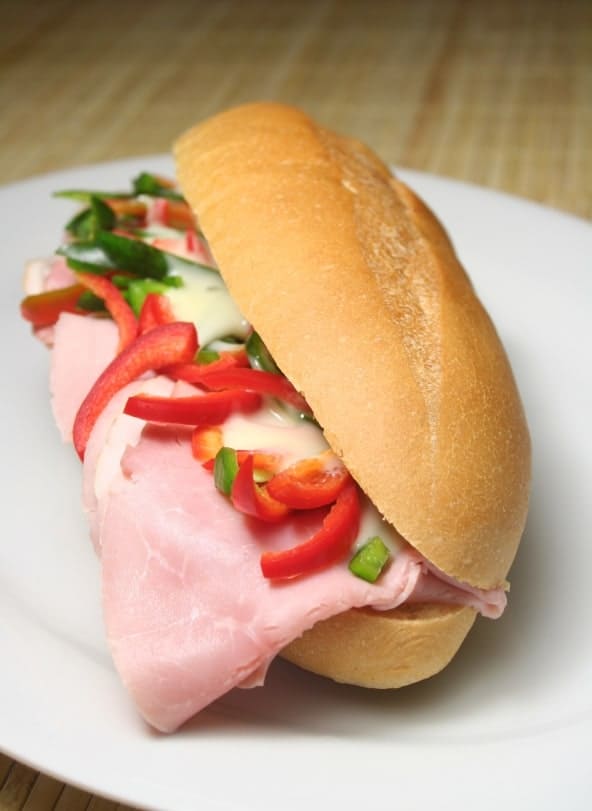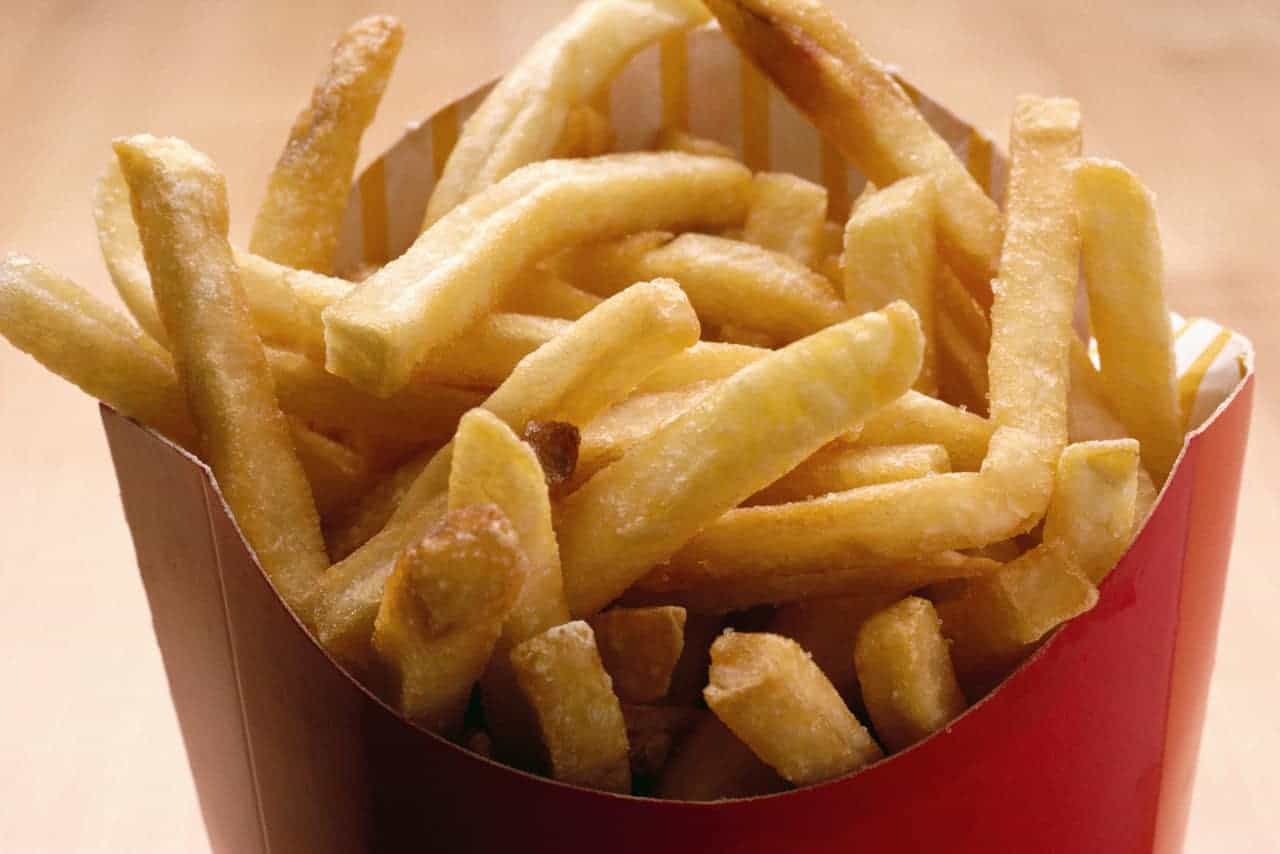I have a confession to make: I eat fast food. Not every week of course or I would not fit into my pants but I have been known to go through the McDonald’s drive through on occasion and indulge in fries and a diet soda. I find myself feeling guilty about that some days….how can I possibly say that I am striving to reduce my carbon footprint yet still eat fast food? I am sure that I am not the only one who has a weakness for salty fries or the occasional cheeseburger. While fast food isn’t exactly healthy, it fits in some days to our chaotic lifestyle. So, I started researching fast food. Why? I was curious to see what fast food restaurants are doing to reduce their own carbon footprints and I was actually surprised at what I found.
Table of Contents
Think About This Thursday
Greener Fast Food Choices
McDonalds: They are striving to reduce energy usage and reduce and/or recycle what they can within their supply chain. They are studying new ways to build greener restaurants including energy-efficiency equipment and lighting, high efficiency plumbing fixtures, and permeable pavement and rainwater collection for irrigation. Currently, 82% of McDonald’s consumer packaging is made from renewable materials. They are beginning to address the issue of sustainable beef, which is probably their biggest ecological impact. They have a long way to go but it is something they are concerned about. They will soon begin using a Marine Stewardship Council seal on their fish products, to denote that they are certified sustainable. They pledge to stop purchasing pork from farms that use gestation crates.
So, eco friendly choices at the Golden Arches would probably be a salad and a fish sandwich!
Burger King: Accord to the Burger King Corporate Commitment to the Environment, (and I quote here) they are “committed to purchasing beef from suppliers that source only beef that has been raised in environmentally responsible ways. As a result, none of our beef comes from recently deforested tropical rainforests.” Of course, they threw in that word ‘recently’ so not sure what to make of that. They have begun holding ‘ BURGER KING® Green Sessions’ to study how they can reduce their carbon footprint and were awarded PETA’S “Most Improved National Food Chain” award. Napkins and kids meal bags are made with 100% recycled material. They are pledging to switch to 100 percent cage-free eggs by 2017 and to eliminate gestation crates for breeding pigs. While personally I think these things should have been outlawed completely, that is a larger issue than just fast food restaurants.
So, a greener choice at Burger King might be an egg and cheese biscuit?
Arby’s: I have a horrible weakness for Arby’s Chicken Tenders. Honestly, they actually look like real chicken, as opposed to something that was smashed up and squished together before breading. In April, the first energy efficient Arby’s restaurant opened in Magnolia, TX. At least 35% of it’s energy comes from renewable resources. They are also working hard to reduce their overall energy usage. They, too, are working to remove gestation crates from their pork supply chain. Other than that, I could not find any information about sustainability initiatives at Arby’s.
I have no suggestion here for a greener Arby’s meal…which is a bummer because I love their curly fries!
Wendy’s: I am not usually a big fan of any restaurant that automatically puts mayonnaise on my hamburger but there are plenty of loyal Wendy’s fans out there, I’m sure. After the Wicked Wendy’s campaign from PETA a few years back, Wendy’s agreed to a few changes in how they monitor their food supply chain. Number one was eliminating the gestational crates for pigs (as many other fast food restaurants have done as well) and to work harder to ensure humane treatment of it’s chickens. I did find a nice page on Wendy’s environmental sustainability initiatives that indicate they are using recycled materials and reducing plastic, which is nice. According to the research I found, a portion of the eggs used in U.S. Wendy’s come from “cage-free” hens. Personally, I think if Burger King can switch to 100% cage free eggs, they can, too.
If you want a greener choice at Wendy’s I suggest meat free options of baked potato and salad!
Subway: I was seriously impressed with the Subway’s sustainability initiatives. They use skipjack tuna, considered by the International Union for Conservation of Nature (IUCN) Red List as a species of least concern. They strive to use sustainably sourced palm oil whenever it is available. In the UK & Ireland, their restaurants serve only Rainforest Alliance certified coffee & tea. They are working with the USDA to increase the number of local farms that meet their quality and audit standards so that they can be included in their supply chain. Their pork breeders do not use gestational crates but only4% of the eggs served in the US and Canada are from cage free hens. (this is apparently a supply issue…they are slowing increasing that percentage). One of their bread bakeries has installed solar panels to reduce their carbon footprint.
Want a greener choice? I would say a tuna or veggie sub is a good choice at Subway!
✯Don’t want to miss the next post?✯ Follow Turning the Clock Back on Facebook | Twitter | Pinterest Or join the private Facebook group for simple tips on going green! 
So, while fast food isn’t something you should indulge in frequently, it is possible to make greener choices when you do end up indulging. In general, choosing options that use less meat are smarter since conventionally raised animals in our food supply chain have a huge carbon footprint. Salads may not be made with organic veggies but their impact on the environment is a lot lower than the cows that go into making those burgers.
Think About This: According to Statistic Brain, there are 160,000 fast food restaurants in the US that are feeding 50 million people ever day. 44% of Americans say that they eat fast food once a week. That is a rather staggering statistic! The amount of food waste generated from home kitchens AND restaurants has increased by 1.2 million tons in the last 25 years. That is a lot of trash to be throwing into our already crowded landfills. So, what is a busy mom to do when faced with the temptation of a fast food restaurant? Here are a few suggestions on how to make your fast food indulgence a little easier on the environment:
1. Skip the drive through if there is a line: I am always amazed when I see 10 cars idling in the drive through line. Don’t people realize that they would get their food much faster if they just parked and went into the restaurant? I am assuming that they are just too lazy to get out of the car but maybe there is a sleeping baby in the back seat. If you have the choice, skip the drive through and make your fast food faster by walking inside.
2. Consider eating in: There is a lot of packaging waste that goes with a take out meal. If you aren’t in a hurry, consider dining in. That way, you can skip the bag alltogether.
3. Think before you grab: Taking 47 napkins and 12 packets of ketchup is not good for our environment. Take only what you need and leave the rest for the next customer. You create less waste and the company doesn’t have to spend extra money to feed your napkin habit.
4. Recycle what you can: If yo DO hit the drive through, save your trash for when you get home so you can recycle it. Those cup lids are made from recyclable plastic and that paper bag can be recycled with the rest of your paper and cardboard.
5. Skip the straw: This is hard to do if you are driving but if you are eating in, consider filling your cup and skipping the lid and straw. Many straws are made from polypropylene, a petroleum bi-product, and not really necessary, either. In fact, research suggests that too much straw sucking can cause wrinkles! Just one more reason to skip the straw!
So, while I encourage you to bring a cooler filled with your own healthy lunch, I am not going to tell you that you must give up fast food in order to go green. Honestly, some days I can just hear those french fries calling out my name as I drive past the fast food restaurants! I do encourage you to make smarter choices in terms of the type of foods you buy, not only for the environmental aspect but also to improve your health. And whenever possible, skip the fast food restaurant completely and opt for healthy recipes at home. Try my strawberry smoothie bowl for breakfast this week and skip the drivethrough!
Want to encourage fast food restaurants to reduce their carbon footprint even more?
Change.org has dozens of petitions to sign to make your voice here. Go HERE to check them out!

Diane is a professional blogger and nationally certified pharmacy technician at Good Pill Pharmacy. She earned her BS in Microbiology at the University of New Hampshire and has worked in cancer research, academics, and biotechnology. Concern over the growing incidence of human disease and the birth of her children led her to begin living a more natural life. She quickly realized that the information she was learning along the way could be beneficial to many others and started blogging and freelance writing to share this knowledge with others. Learn more about her HERE.


We do occasionally eat fast food. I try to limit it but there are some days with two active and busy teenagers, a job, husband, blogs, etc. that I need a quick solution.
Great post Diane! This makes me feel so much better about my fast food choices knowing that their are greener options!
it is hard to give up fast food completely so making smart choices when we do have it is important!
We have been making changes around the house to live a little greener. I think we need to take a look at our fast food consumption and make greener choices there too!
This is great information! It seems like Subway is the biggest winner in efforts to become greener. The burger chains have a long way to go, though.
Giving up on fries… that is so hard but I know it will be for the best, thanks for the great information
I have such a weakness for fast food. Since I started my diet though, I haven’t had any. I feel a lot better not eating fast food, and I notice that whenever I do- I always get a headache. Always! So, for my health I’m going to cut down on it even after my diet. This is a really great post and I’m glad you mentioned some greener meal options!
We are a once a month fast food eating family …. I normally crave something non healthy that time of month.
me too! I crave salty french fries! Why I crave salt when I am retaining that much water I have no idea!